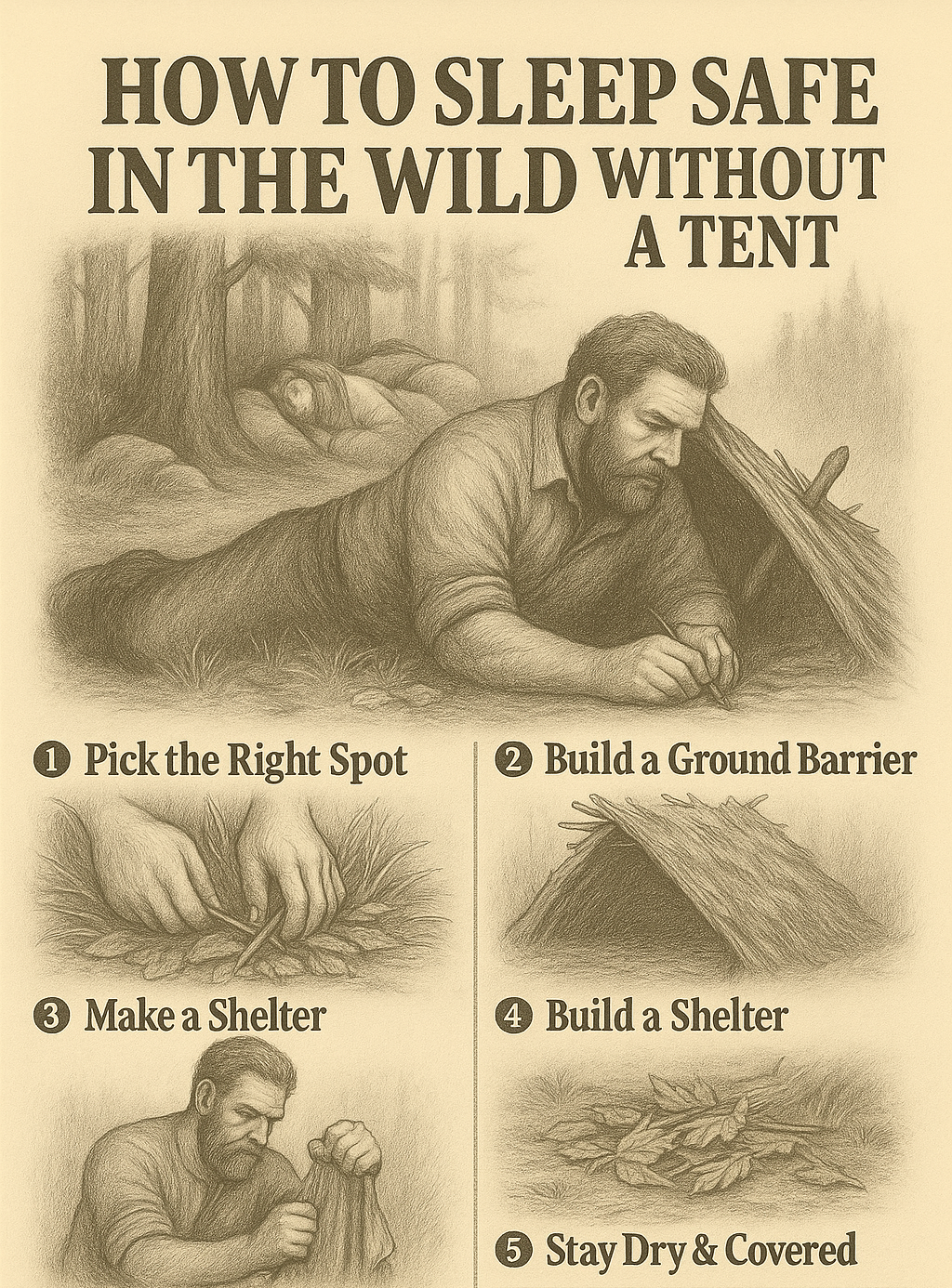Day 55: How to Sleep Outside Without a Tent
Skill: Rest Without Risk
Sleep keeps your mind sharp and your body strong. But in the wild, sleeping wrong can mean exposure, animals, or worse. Here’s how to rest safely — even with no tent, tarp, or gear.
What This Does:
Protects you from cold, bugs, and predators
Helps you wake up ready to move, fight, or survive
Keeps your gear and body dry and secure
Step 1: Pick the Right Spot
High. Dry. Hidden.
Avoid valleys where cold air settles.
Stay off trails — human or animal.
Choose flat ground with natural cover (rocks, trees, bushes).
Avoid creek beds — flash floods happen fast, even without rain nearby.
Step 2: Build a Ground Barrier
Insulate from below.
The cold ground will steal your heat.
Use what you’ve got:
Pine needles
Leaves
Branches
Dry grass
Layer thick. At least 4 inches deep.
Step 3: Build a Shelter
Keep heat in, water out.
No tent? No problem.
Lean sticks against a fallen log or rock wall
Weave in leaves, bark, branches
Add a "roof" layer for water runoff
Small space = warmer space
Even a basic debris hut can raise temps by 10–15°F inside.
Step 4: Stay Dry & Covered
Strip off wet clothes before bed
Wrap in anything dry (jacket, blanket, dry leaves)
Cover your head — most heat loss happens there
Keep gear close and under cover
Step 5: Set Alerts (Optional But Smart)
Place dry leaves or sticks around your camp
Set noise traps (rocks in cans, tripwires)
Sleep with your knife within reach
Bonus Tips:
Sleep on your back to preserve warmth
Don’t sleep too deep — light sleep is safer
Face your shelter entrance if possible
Warm a rock by the fire and wrap it in cloth near your core
Bottom Line:
You don’t need a tent to survive the night.
You need warmth, cover, and a bit of awareness.
The wild isn’t out to get you — but it doesn’t care if you’re ready or not.
Now you will be.
Although you now know how to sleep without a mattress doesnt mean you dont want one, grab one above^




